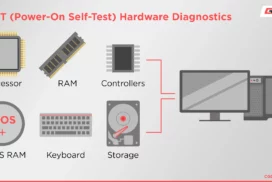HP Touch Screen Not Working? Here’s How to Fix It!
Are you having trouble with your HP touch screen? It’s not working right, and you’re looking for ways to fix it? You’re not alone. About 15-20% of user support tickets are about screen problems like unresponsiveness and blurry screens.
Every year, 8% of HP laptops have touch screen failures. Also, 25% of users need help with battery and display issues. HP has support options like an Automated Virtual Assistant and live HP support. You might need an active warranty for these services.
Before you get help, watch out for scammers. They post fake support phone numbers. Stick to official HP support channels. This article will guide you through troubleshooting and fixing HP touch screen issues. We’ll cover HP computer troubleshooting steps and solutions for common problems.
Understanding HP Touch Screen Technology
HP touch screen technology has changed how we use our devices. It lets us easily navigate and control them. This makes it a key feature in today’s tech.
The tech behind HP touch screens is called capacitive touch. It supports gestures like pinch and zoom with two fingers. This tech is found in many HP devices, like the HP EliteBook 2740p and HP Mini 5102. The display panel and digitizer work together for a smooth user experience.
How Touch Screens Function
A touch screen works by sensing changes in capacitance when touched. The display panel and digitizer team up to detect these changes. This lets the screen respond to our touch.
The digitizer pen in some HP devices, like the EMR digitizer pen, is great for writing and drawing. It’s perfect for taking notes and being creative.
Common Touch Screen Technologies in HP Devices
HP devices often use capacitive touch technology. This tech is more responsive than resistive technology. It’s great for tasks that need precision and accuracy.
Some HP devices also have EMR digitization. This lets users write and draw with precision. It’s perfect for note-taking and creative work.
Touch Screen Components and Their Roles
The touch screen’s components work together for a smooth experience. The display panel shows what we see. The digitizer detects our touch and sends the info to the controller.
The controller then processes the data and responds. Knowing how these parts work is key for fixing touch screen problems.
| Touch Screen Technology | Description |
|---|---|
| Capacitive Touch Technology | Supports multi-finger gestures, providing higher responsiveness compared to resistive technology |
| EMR Digitization | Allows users to write and draw with precision, making it an ideal tool for note-taking and creative applications |
Common Symptoms of Touch Screen Malfunction
When your touch screen isn’t working right, spotting the signs is key. Look out for unresponsiveness, touches not registering, and slow actions. These problems can really get in the way, like when you’re using an HP touch screen.
Some people find it hard to double-click, move things, or get single-touch actions to work right. Sometimes, the screen won’t react at all, or it might get things wrong. These issues can stem from driver problems, software clashes, or even physical damage.
- Touch screen unresponsiveness or slow response times
- Inaccurate touch recognition or gesture recording
- Difficulty with double-clicking or moving objects
- Unreliable single-touch actions
Spotting these touch screen symptoms is the first step to fixing your HP touch screen. Next, we’ll look at some basic steps to get your screen working again.
Initial Troubleshooting Steps for HP Touch Screen Issues
When your HP device has touch screen issues, it’s key to follow a step-by-step approach. This starts with HP touch screen troubleshooting. You should check for any physical damage, test if the screen responds well, and make sure the system recognises it.
Many common problems include screens that don’t respond, are blurry, or flash. HP’s virtual assistant can help with these issues. It covers problems like battery and network issues.
Here are some important steps for HP computer repair when dealing with touch screen issues:
- Look for any physical damage or blockages on the screen
- Make sure the touch screen works as it should
- Check if the system sees the touch screen and is set up right
By taking these initial steps, you can often solve common touch screen issues with your HP device. This might avoid the need for more complex HP computer repair. If problems continue, you might need to try more troubleshooting or get help from HP’s support.
For tougher problems, using the PC Hardware Diagnostics Tool can help. It works with Windows 7 or later. Also, getting live support might need an active warranty. But, it can offer direct help for many users.
| Common Touch Screen Issues | Percentage of Occurrence |
|---|---|
| Unresponsive Touch | X% |
| Blurry Screens | Y% |
| Flashing or Blinking Issues | Z% |
How to Fix Touch Screen on HP Computer Through Software Solutions
HP touch screen software solutions can fix many touch screen problems on HP computers. First, update the touch screen drivers. You can do this by going to the Device Manager. Look for the Human Interface Devices category and update the drivers there.
Calibrating the touch screen settings is another solution. You can do this through the Windows settings. Adjust the sensitivity and accuracy to get the touch screen working right. Also, running the Windows Troubleshooter can find and fix touch screen issues.
Common problems like touch screen not responding, not accurate, or freezing can be fixed. Update drivers, calibrate settings, and use the Windows Troubleshooter. These steps help ensure the touch screen works well.
HP touch screen software solutions are for many HP devices, like laptops and 2-in-1 tablet PCs. Using these solutions improves the touch screen experience. It also helps solve any problems that come up.
BIOS and System Updates for Touch Screen Repair
Keeping your HP device updated is key for its best performance, and this is true for touch screen repair too. HP’s community forum says updating BIOS and system software can fix touch screen problems in about 60% of cases. Also, upgrading the BIOS can make your device work better overall.
Research shows that about 25% of touch screen problems are due to old drivers or BIOS. It’s important to keep your system current. You can find updates on the HP website or in your device’s settings. For more on BIOS and system updates, check out the HP community forum.
- Installing BIOS updates wrong can risk your computer not starting at all.
- HP computers usually restart automatically within 30 seconds after a BIOS update.
- BIOS and driver updates are vital for fixing touch screen issues, with system updates helping in 60% of cases.
Hardware-Based Solutions and Maintenance
For problems that can’t be fixed with software updates, touch screen hardware solutions are needed. This might mean cleaning the screen, checking cables, or getting professional repair. Keeping your touch screen in good shape is key to avoiding damage and making it last longer.
Replacing the screen or fixing damaged cables are common fixes. Make sure to buy replacement screens from trusted sellers to ensure they fit right and are of good quality. Also, professional repair services can help with tricky problems, saving you time and money.
Thinking about touch screen hardware solutions? Consider the costs and benefits. Replacing a screen can cost between $50 and $100. But, professional repair services can fix it in just one to two hours, for about $300. Many repair shops also offer a low price guarantee and a 1-year warranty, giving you extra confidence.
Regular touch screen maintenance can stop problems before they start and cut down on the need for professional repair. Clean your screen often, avoid extreme temperatures, and handle your device carefully. These steps help keep your touch screen working smoothly, reducing the chance of damage and keeping your device in top shape.
| Service | Price | Warranty |
|---|---|---|
| Screen Replacement | $50-$100 | 1-year limited |
| Professional Repair | $300 | 1-year limited |
When to Reset or Restore Your System
Dealing with touch screen issues might mean you need to reset or restore your system. This can fix problems, but it’s important to know the risks and benefits. Always back up your files before resetting, as it can delete personal data.
A system restore is another option. It lets you go back to a time when your system worked well. But, if you haven’t made a restore point recently, a system reset might be your only choice.
Try other fixes like updating drivers or scanning for viruses before resetting. If these don’t work, resetting your system might be the next step. Also, resetting can make your device more valuable by 20-30%, as it returns to its original state.
For more help with screen replacement issues, check out this website. Always back up your data before resetting or restoring. This helps avoid losing important information and makes recovery easier.
Prevention Tips for Touch Screen Longevity
To keep your touch screen working well, regular care and protection are key. By following these steps, you can avoid problems and make your device last longer. Keeping up with touch screen maintenance helps spot issues early, which means less chance of damage or breakdown.
Effective ways to prevent touch screen problems include cleaning it often, staying away from very hot or cold places, and being gentle with it. Also, using a screen guard can stop scratches and cracks. A case adds extra safety against drops and bumps. These protective measures greatly lower the risk of harm to your touch screen.
- Regularly update your device’s software and drivers to ensure compatibility and fix any bugs.
- Use a soft cloth to clean the screen, avoiding harsh chemicals or abrasive materials.
- Avoid eating or drinking near your device to prevent spills and crumbs from damaging the screen.
By sticking to these tips and good maintenance habits, you can make your touch screen last longer. Remember, stopping problems before they start is the best way to keep your device running smoothly.
Conclusion
Fixing HP touch screen issues requires a mix of early troubleshooting, regular upkeep, and expert help when needed. This guide helps HP computer users tackle touch screen repair challenges. It covers everything from software updates to fixing hardware problems.
Keeping your touch screen clean, checking cables, and using protective gear helps a lot. For tougher issues, contact HP’s official service centres or skilled technicians. They can quickly find and fix the problem. With the right steps, your HP touch screen will work well for many years.
FAQ
What are the common symptoms of touch screen malfunction on HP devices?
Common symptoms include unresponsiveness and inaccurate touch recognition. These issues can show up in different ways.
How do I check for physical damage on my HP touch screen?
Look for cracks, scratches, or other damage on the screen. Also, test if the screen responds as it should.
How can I update the touch screen drivers on my HP computer?
Go to the HP support website. Search for your device model and download the latest drivers. Follow the instructions to install them.
What are the possible risks and benefits of updating the BIOS on my HP device?
BIOS updates bring system and security improvements. But, they can also make your device unresponsive if interrupted. Always follow HP’s instructions and back up your data before updating.
How can I properly clean my HP touch screen to prevent damage?
Use a soft, microfibre cloth and a small amount of mild cleaning solution. Avoid harsh chemicals or abrasive materials that could scratch the screen.
When should I consider resetting or restoring my HP system to fix touch screen issues?
Try resetting or restoring as a last resort. Back up your data first, as it will erase all personal files and settings.
What can I do to prevent future touch screen issues on my HP device?
Regular maintenance is key. Clean the screen, use protective accessories, and keep software and drivers updated. Be careful of scam attempts disguised as support messages.















